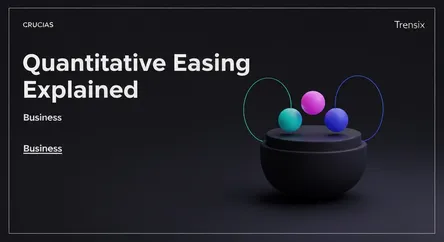Business
Quantitative Easing Explained

Discover Quantitative Easing (QE), a monetary policy where central banks buy assets to increase money supply, lower interest rates, and boost the economy.
What is it?
Quantitative Easing (QE) is an unconventional monetary policy tool used by central banks to stimulate an economy when traditional methods aren't working. It involves the central bank purchasing long-term securities or other assets from the open market. This action increases the money supply and injects liquidity into the banking system. By buying these assets, the bank increases their price and lowers their yield, which in turn helps lower interest rates across the economy. The primary goal is to encourage banks to lend more and businesses and consumers to borrow and spend more, thereby boosting economic activity.
Why is it trending?
Quantitative Easing frequently trends during periods of economic uncertainty or crisis. It gained global prominence following the 2008 financial crisis and saw a major resurgence during the COVID-19 pandemic as governments sought to prevent deep recessions. Today, discussions about QE remain highly relevant as economies grapple with its after-effects, such as high inflation. The debate over when and how to reverse the policy—a process known as 'quantitative tightening'—keeps it a hot topic among economists, investors, and policymakers.
How does it affect people?
QE directly impacts individuals by influencing borrowing costs and investment returns. It can lead to lower interest rates on mortgages and car loans, making borrowing cheaper for consumers. For investors, QE can drive up the prices of assets like stocks and bonds. However, it also carries risks. A massive increase in the money supply can lead to inflation, eroding the purchasing power of people's savings and wages. This means everyday goods and services can become more expensive, affecting household budgets and the overall cost of living.